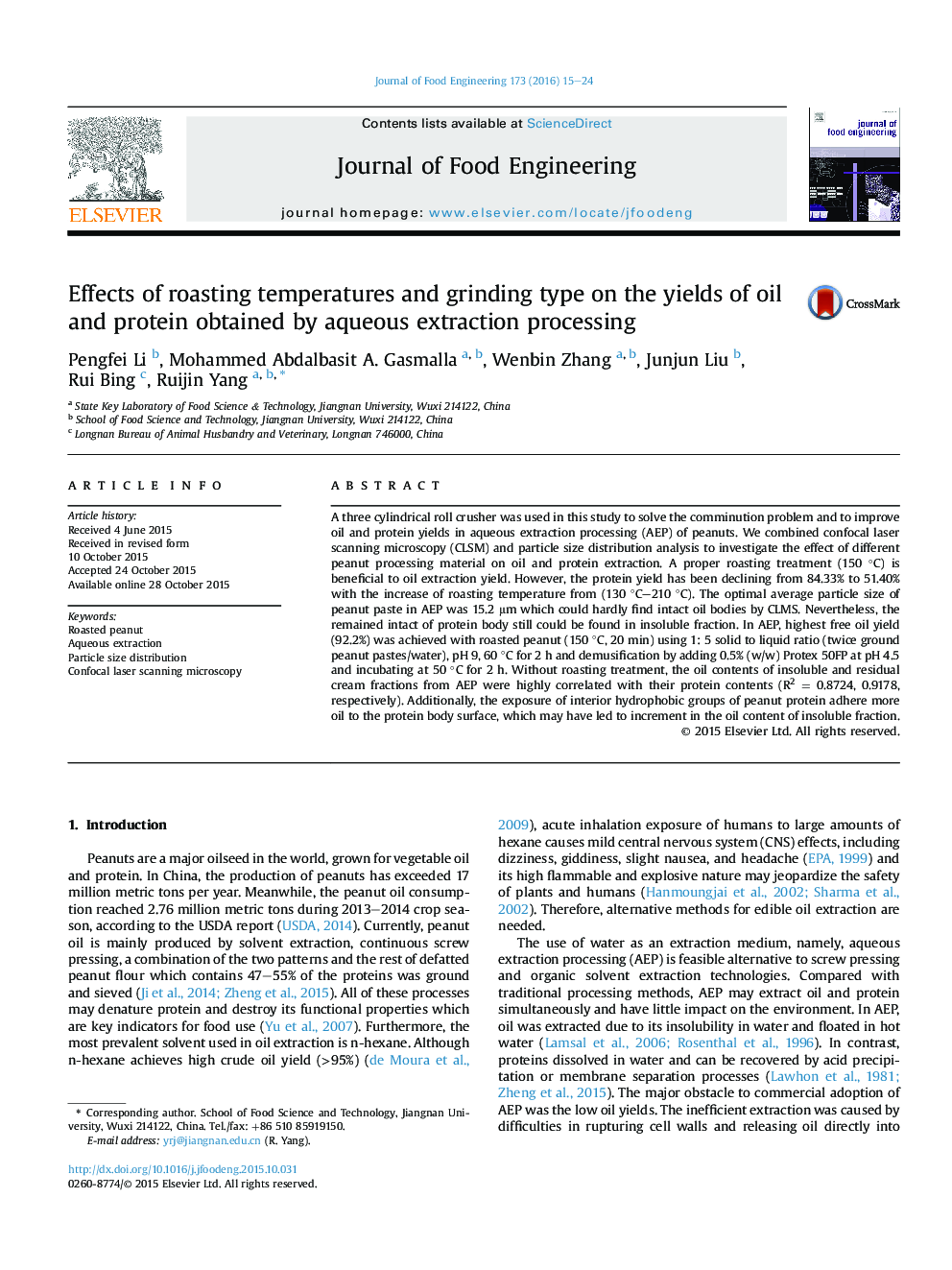| کد مقاله | کد نشریه | سال انتشار | مقاله انگلیسی | نسخه تمام متن |
|---|---|---|---|---|
| 222757 | 464295 | 2016 | 10 صفحه PDF | دانلود رایگان |
• A proper roasting treatment will improve the free oil extraction yield.
• Raw peanuts with smaller particle size increase the oil content in residual cream.
• More oil adheres to the protein body surface in insolubles after roasting treatment.
• Roll crusher is more suitable for scale-up pilot than high-speed universal grinder.
• Intact cells are still present in ground peanut when d0.5 is greater than 20 μm.
A three cylindrical roll crusher was used in this study to solve the comminution problem and to improve oil and protein yields in aqueous extraction processing (AEP) of peanuts. We combined confocal laser scanning microscopy (CLSM) and particle size distribution analysis to investigate the effect of different peanut processing material on oil and protein extraction. A proper roasting treatment (150 °C) is beneficial to oil extraction yield. However, the protein yield has been declining from 84.33% to 51.40% with the increase of roasting temperature from (130 °C–210 °C). The optimal average particle size of peanut paste in AEP was 15.2 μm which could hardly find intact oil bodies by CLMS. Nevertheless, the remained intact of protein body still could be found in insoluble fraction. In AEP, highest free oil yield (92.2%) was achieved with roasted peanut (150 °C, 20 min) using 1: 5 solid to liquid ratio (twice ground peanut pastes/water), pH 9, 60 °C for 2 h and demusification by adding 0.5% (w/w) Protex 50FP at pH 4.5 and incubating at 50 °C for 2 h. Without roasting treatment, the oil contents of insoluble and residual cream fractions from AEP were highly correlated with their protein contents (R2 = 0.8724, 0.9178, respectively). Additionally, the exposure of interior hydrophobic groups of peanut protein adhere more oil to the protein body surface, which may have led to increment in the oil content of insoluble fraction.
Journal: Journal of Food Engineering - Volume 173, March 2016, Pages 15–24
